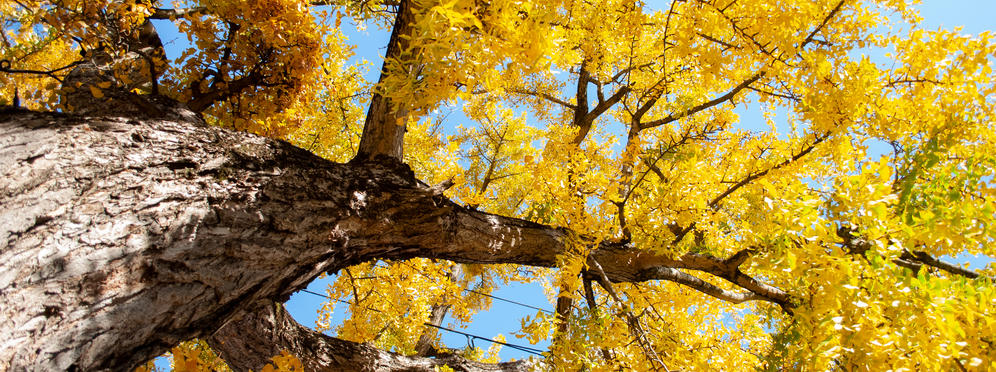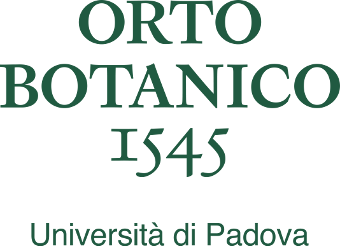Ginkgo
Ginkgoes are the only surviving species of Ginkgophyta and are undoubtedly the most ancient seeding plants.

Ginkgoes are the only surviving species of Ginkgophyta and are undoubtedly the most ancient seeding plants. In the Jurassic and Cretaceous, similar plants grew on all emerged land, but they later disappeared gradually, except for this large tree that Darwin called "a living fossil". Probably native to inland China and long considered extinct in spontaneous form, they appear to have been discovered in natural woodland in a small area around Nanking. Ginkgoes have always been cultivated in temple gardens and sacred sites in China and Japan. They were worshipped as "holy" trees for various reasons - they were thought to protect people from evil spirits, and represented the meeting of opposites and immutability.
They are imposing trees that develop slowly and live for many years, and may grow up to 30 metres. They are often grown in parks and gardens, and are appreciated for their bilobate fan leaves which turn gold before falling in autumn, and because they are very resistant to diseases, fungi, phytophagous organisms and pollution. They are dioecious plants, i.e., with male and female catkins borne on separate trees. Male specimens are usually planted in parks and along roads because the seeds of the female trees have a very disagreeable, rancid odour due to butyric acid in their outer fleshy covering, which may also cause severe dermatitis. In the Far East, the seeds are considered a delicacy and are fermented before consumption to free them of their covering. The name of the genus Ginkgo is of Japanese origin and means "silver apricot" (gin = silver; kyo = apricot) because the ripe seeds look like floured apricots. The name of the species, "biloba", is due to the bilobate shape of the leaves. However, the name "Ginkgo" instead of Ginkyo, the original pronunciation of the Japanese name, is due to a printing mistake made by Linnaeus (in Mantissa plantarum, 1767) which is now conventionally accepted. The majestic ginkgo inside the north gate in the quarter bearing the same name, was brought to Padova in 1750. It is a male specimen, on which female branches were inserted for teaching purposes in the late 1800s. Every year, the tree bears paired ovules on short peduncles which, in autumn, turn into yellowish plumlike seeds. This old ginkgo lost its typical cone shape when it was struck by lightning. The usual cone shape may be seen in a young specimen growing outside the wall behind the greenhouse containing Goethe’s palm, in front of the first of the 19th-century greenhouses. The ginkgo has always attracted and inspired artists and poets from all over the world. Among them was Wolfgang Goethe, who dedicated to it one of his works, which is presented below in its original version. (source: http://www.xs4all.nl/~kwanten/goethe.htm) Manoscritto Ginkgo biloba is studied in medicine. Its leaves contain many flavonoids and ginkgolids (with terpene structures), which are useful in preventing and treating micro-circulatory diseases, especially atherosclerosis and other diseases caused by increased platelet aggregation. It is also recommended for cerebrovascular insufficiency with cognitive deficit, and in disorders of hearing and equilibrium. Despite its various therapeutic uses, self-medication is not recommended, and it must be kept under medical control. Its use must be avoided in association with drugs modifying platelet aggregation (e.g., aspirin), since they may give rise to dangerous interactions.






